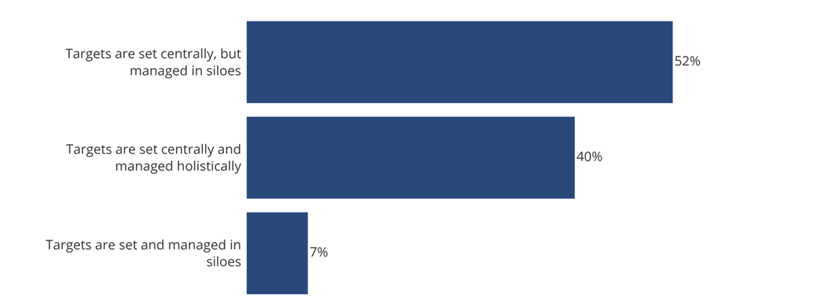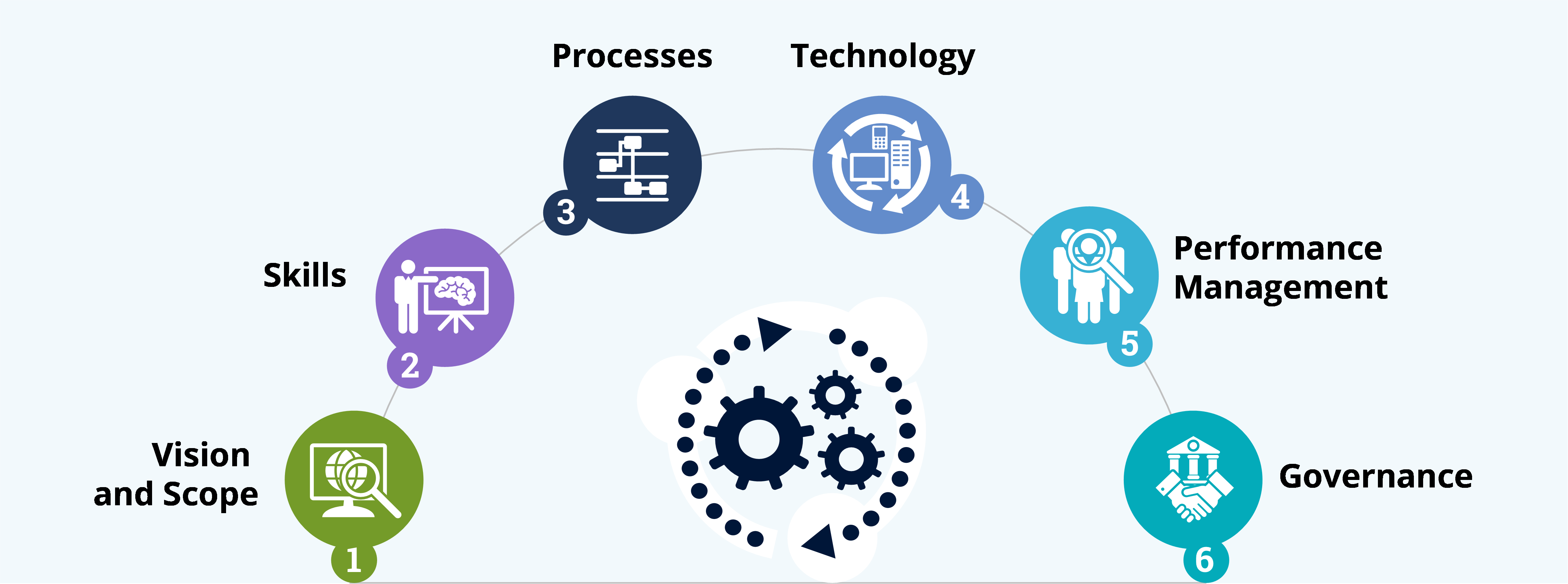In today’s competitive business landscape, organizations are constantly looking for ways to save costs and improve productivity. Most companies have numerous initiatives running to reduce expenses, implement new technologies and simplify ways of working. But, according to the recent 2023 ISG Cost Optimization Study, more than half of companies’ cost savings targets are managed in siloes, which means the respective teams are not sharing knowledge or maximizing operational capabilities and technologies.
For example, in many organizations, the technical requirements and volume forecasts for a given expense category are developed by one team, negotiated and contracted by a second team and executed by a third. If the second team negotiates a discount on the unit price, then they are overpaying for an amount they’ll never use. Great pricing on paper can still mean significant excess costs.

Figure 1: Source ISG 2023 Cost Optimization Study
A cost optimization center of excellence has emerged as a powerful solution to address these challenges.
A cost optimization center of excellence (which some shorten to CoCoE) is a physical or virtual center of expertise that identifies, analyzes and implements cost-saving initiatives across the organization. The goal is to work in an agile and transparent way, using methodologies that are both pragmatic and actionable. A CoCoE drives well-informed decision-making and brings together uncoordinated efforts across different departments, providing structured cost transparency and a holistic cost-savings program that is continuous, scalable and cost-effective.
Cost Transparency and Cost Savings
A CoCoE can significantly alter the way an organization views its cost savings targets by providing a holistic approach that cuts across organizational siloes, improves efficiency/effectiveness and provides consistency. It can help leaders ensure expected business value and returns and leverage capabilities across the organization at scale.
A CoCoE can:
- Align costs with customer experience
- Manage provider ecosystem value and risk
- Monitor savings and investments
- Drive visibility and accountability of spend
- Manage software and subscription commitments
- Continuously provide market intelligence data and insights
- Drive technology for transformation and cost-effectiveness
Once implemented, the CoCoE will become an integral part of your organizational DNA and a normal way of doing business.
The 6 Core Elements of a Cost Optimization Center of Excellence
- Vision and scope: A CoCoE charter will allow you to proactively manage and optimize internal and external costs. It also can facilitate cross-functional collaboration, continuous benchmarking and spend management, creation of a value realization office, workforce optimization and change management.
- Skills: A CoCoE has defined roles and responsibilities across many areas such as finance, digital strategy, IT operations, product/process owner(s), procurement/sourcing, value realization lead, executive sponsor to ensure buy-in for all aspects of the organization.
- Processes: Designate areas of focus to be impacted by the CoCoE such as network expense management, software asset management, cloud FinOps, technology business management, vendor management, benchmarking, invoice forensics, business process management and automation.
- Technology: Deploy tools for discovery, analytics, monitoring/measurement along with collaboration, compliance and reporting.
- Performance management: Develop operating and savings reports along with KPI and metrics reports to ensure a data-driven approach to enable continuous improvement.
- Governance: Describe ongoing program accountability and the decision-making process to drive business value.

Figure 2: Cost Optimization Center of Excellence Framework
The CoCoE framework is supported by strong communication and change management practices, which are vital to engaging stakeholders and fostering a culture of cost optimization throughout the organization. Additionally, as business conditions and priorities change, the CoCoE is agile enough to evolve and adapt its strategies and approaches. It will stay abreast of industry trends, emerging technologies and best practices to identify and prioritize new opportunities to maintain its long-term relevance and effectiveness.
The Top 5 Benefits of a CoCoE
- Optimized and sustained savings
- Cost transparency and agility
- Improved showback and chargeback
- Verifiable business case performance
- Mitigated financial and compliance risk
The expected benefits of a CoCoE that is aligned with a growth and transformation strategy will allow an organization to focus on optimizing the cost of transformation and support necessary investments in the company’s future. The culmination of the strategies will lead to a cost optimization program that is continuous, scalable and cost effective.
To get started, senior leaders will need to play an important role in breaking down the siloes and obtaining the necessary buy-in to move forward. ISG can help your organization think through the barriers to moving forward and build the framework to launch a successful CoCoE. Contact us to get started.
